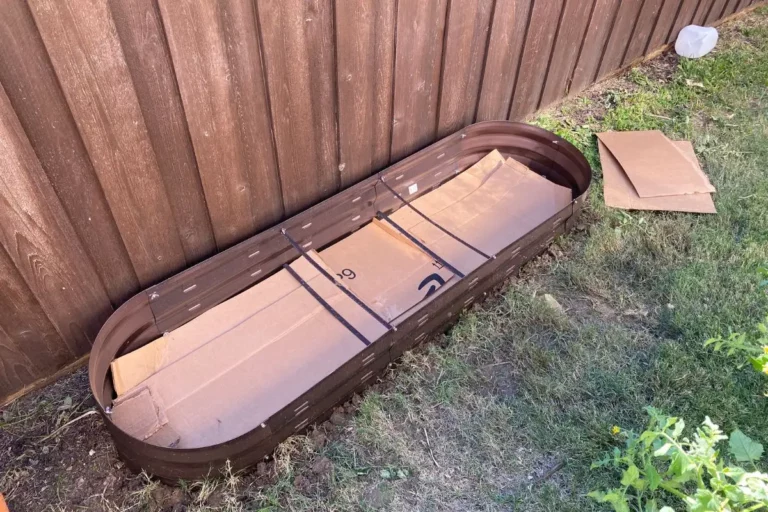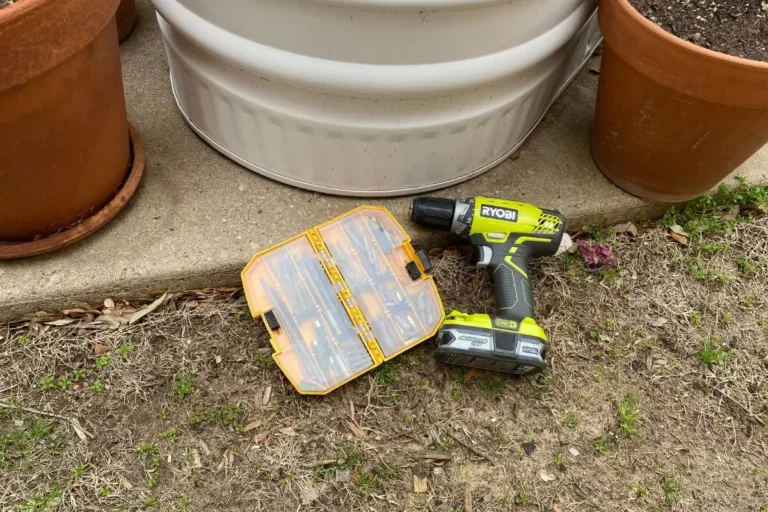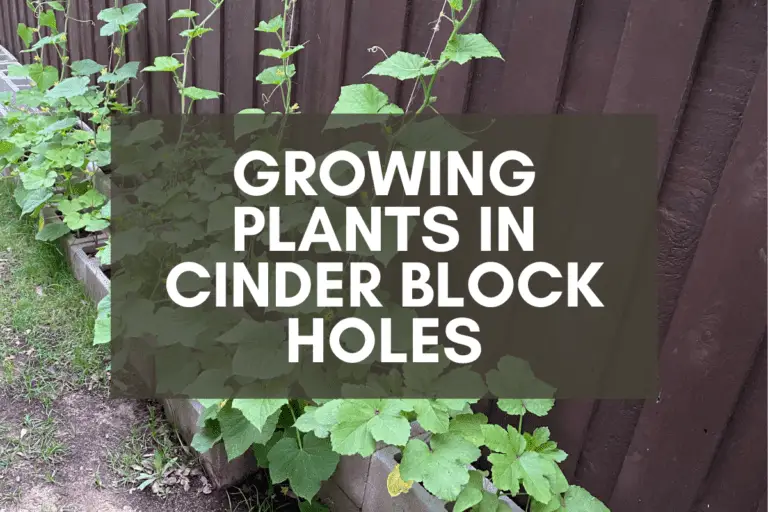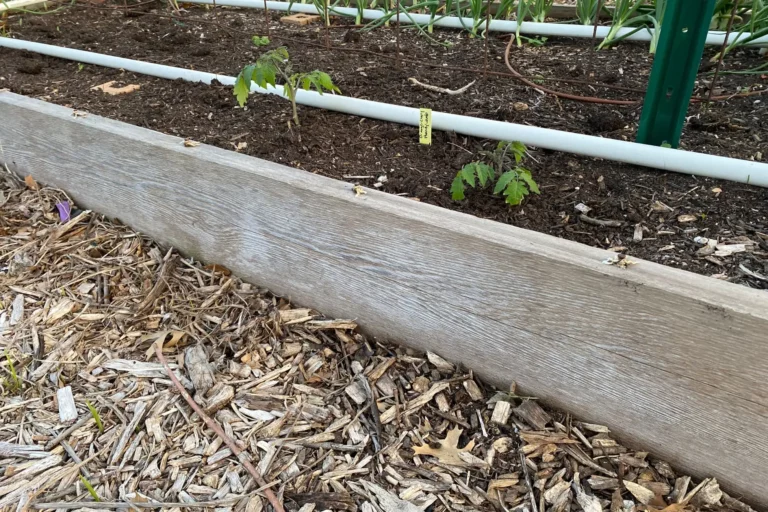Filling Raised Beds with Just Compost: Should You Do It?
As any gardener will tell you, good compost is rich in nutrients that are essential for plant growth, including nitrogen, phosphorus, and potassium. It’ll improve raised beds by increasing the amount of organic matter in the soil, resulting in healthier plants.
Of course, this raises the question: If compost is so good, can you just fill your raised beds with it?
Filling raised beds solely with compost is possible but not ideal for growing plants. To create a healthy soil profile, compost can be tested to determine its pH score, then amended with coconut coir, vermiculite, perlite, lime, or organic fertilizers to achieve ideal consistency and NPK levels.
If you’ve not familiar with pH scores and NPK levels, don’t worry at all. I’ll cover these things in detail below.
Long story short, if you’re not careful with your compost, you might cause yourself some headaches as time goes on.
With this in mind, I’ll explore the following topics in this article:
- why exactly you should think twice before filling your raised beds with just compost.
- ways you can test your compost to learn about its acidity and see what nutrients it might lack.
- materials you may need to add to your raised beds and compost alike to create the kind of healthy soil that plants need for proper development.
Raised bed gardening can be an incredibly rewarding experience, allowing you to control the soil quality and environment for your plants.
However, filling your raised beds with the right materials is essential for creating the kind of soil that will support healthy plant growth.
Can You Fill Raised Garden Beds with Compost Only?

Compost is a soil amendment made up of decomposed organic matter, like yard waste, kitchen scraps, compostable materials, and animal manure.
An excellent soil amendment that provides many benefits for plant growth, compost is unfortunately not enough in and of itself to create a healthy soil environment for your plants since it can lack many of the essential nutrients that plants need to grow such as calcium, nitrogen, phosphorus, and potassium.
I say “lack,” but in all reality, your compost likely has those ingredients (possibly in abundance!). But they’re tied up in the form of larger molecular structures that are going to take time to fully break down before plants can access the nutrients.
Check out this information about compost use and soil fertility from the University of Massachusetts to learn more about why compost needs to age before plants can benefit from its nutrients.
To understand why exactly you should use compost in your raised beds–but only as an amendment and not compost only–let’s take a look at the advantages and disadvantages of using compost as a growing medium.
Here are the advantages of using compost in your raised garden beds:
| Improves Soil Structure | Compost helps to improve the overall soil structure of both sandy or clay soils, making it easier for sand to hold onto moisture and breaking up clay soils so that roots can penetrate the soil and absorb water and nutrients. |
| Increases Soil Fertility | Organic compost is often rich in nutrients that are essential for plant growth, including nitrogen, phosphorus, and potassium. This helps increase the fertility of the soil, leading to healthier and more vigorous plant growth, but it takes time for this process to play out since the nutrients are often bound up in molecular structures that must decompose over time. |
| Supports Microbial Activity | Compost is made up of decomposed organic matter, which provides food and habitat for beneficial soil microbes. This helps to maintain a healthy soil ecosystem that supports plant growth. |
| Readily Available | Compost is easy to find and can be purchased in bags or in bulk. I recommend bulk purchases since you’ll save the most money that way. |
| Easily Made | If you have space on your property, you can easily make your own compost bin or purchase a bin from a garden center or online retailer. Adding kitchen scraps and yard debris will result, as the months go on, in free compost that you can move from your compost bin to your raised beds. |
Of course, the advantages for your soil structure begin to disappear if you attempt to fill your raised beds with nothing but compost, especially bagged compost or compost that you purchased in bulk from a local supplier.
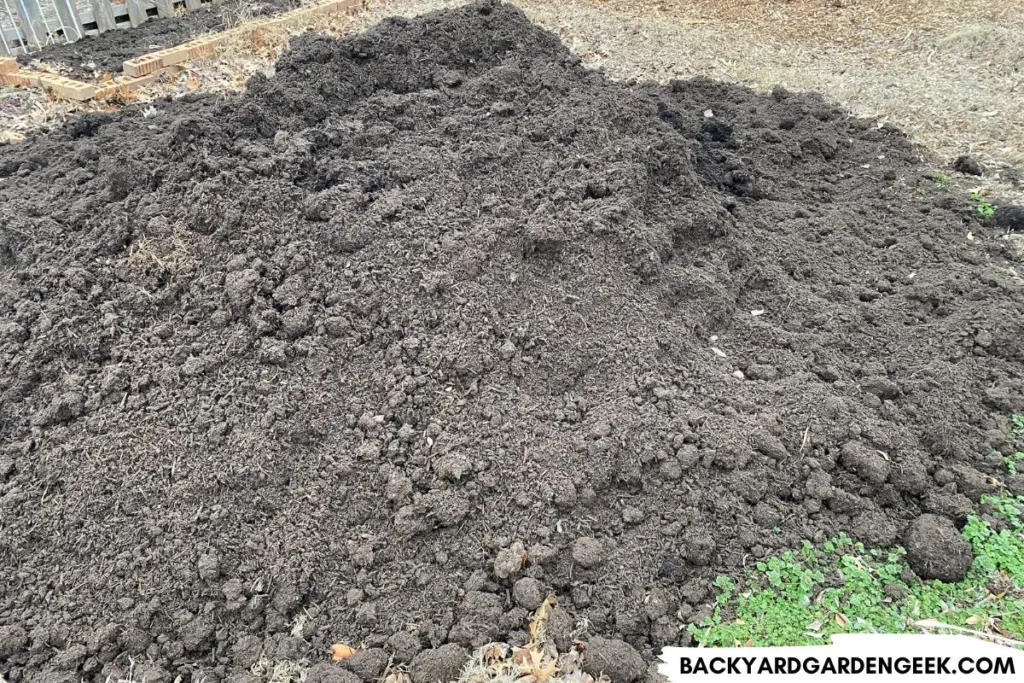
Here are the disadvantages of using compost in your raised beds if it’s your sole material or amendment:
| Lacks Essential Nutrients | Compost alone does not immediately provide all of the essential nutrients that plants need to grow. If the proper nutrients are present in the soil, it might take many months for the decomposition process to make them readily available to your plants. |
| Poor Soil Structure | Compost needs to be added as an amendment to existing soil, not used by itself. The younger the compost, the more time it needs to break down before it’ll improve soil conditions in your garden. |
| Poor Drainage | Compost is perfect for improving soil drainage in sandy or clay soils, but when used alone, it does not improve soil drainage and can even lead to waterlogged soil and root rot in plants. |
To create a healthy soil environment for your plants, you’ll want to balance the soil profile in your raised beds.
One way I do this is to fill my new raised beds with all kinds of materials that will compost down over time, resulting in nice, healthy soil for future plants. I also make sure that the soil in my raised beds comes into direct contact with the native soil on my property.
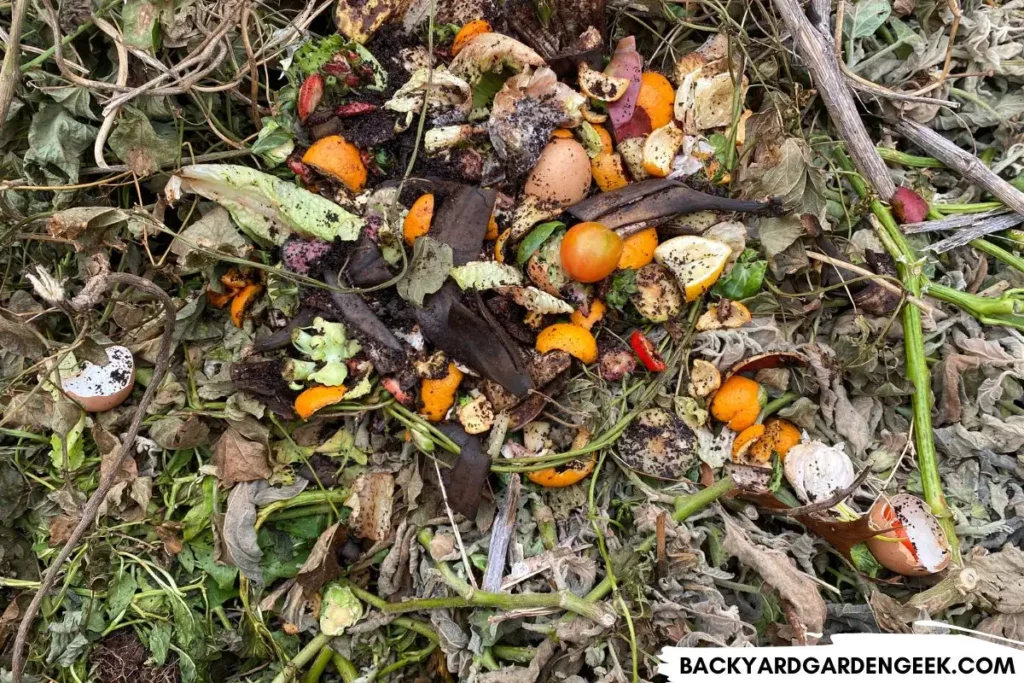
Here are a few articles where you can learn more about what I’ve done with my raised beds:
- 18 Best Materials to Put in the Bottom of Your Raised Beds
- 40 Cheap and Easy Ways to Fill Your Raised Garden Beds
- Landscape Fabric Under Raised Beds: Is It Necessary?
- Pros and Cons of Raised Garden Beds: Know Before You Grow!
- Should You Remove Grass Under Raised Beds?
As I noted earlier, you shouldn’t fill raised beds entirely with compost. You should instead amend your pre-existing soil with compost to encourage future soil health.
But before adding compost to your current soil, did you know that you can amend the compost to improve its overall quality?
Here are some tips for adding materials to compost to create a more balanced soil profile:
1. Add Fertilizer
Fertilizer can provide the essential nutrients that plants need to grow, especially nitrogen, phosphorus, potassium. Since compost needs time to decompose and release its nutrients, the addition of fertilizer can make nutrients readily available.
I personally love fish emulsion since it’s a fairly balanced fertilizer and there’s no chance of burning your plants with it.
2. Add Vermiculite
Vermiculite can be added to improve soil structure and water retention, making it an excellent addition to the compost in a raised bed.
3. Add Coconut Coir or Peat Moss
Coconut coir and peat moss are amendments that can help improve soil structure and water retention. Both can be added to compost to help create a more balanced soil environment for your plants.
4. Add Perlite
If you’ve ever purchased potting soil, the little white specks you see are perlite. They’re actually a type of volcanic glass that decreases soil density and improves aeration.
If you have thick, dense soil on your property, adding some perlite to your compost before you amend your soil can lead to a better soil profile over time.
Can You Grow Vegetables in Compost Only?
You can technically grow vegetables in compost alone, but I don’t recommend it since your plants will likely suffer nutrient deficiencies that you’ll have to make up for with the amendments I’ve noted above.

To create a healthy soil environment in your raised beds as simply and cheaply as possible, follow the overarching principles of hugelkultur:
- Fill the bottom of your raised beds with large compostable materials such as logs and branches.
- Begin filling the rest of your raised bed with cheap, easily accessible materials from your home or yard.
- As you fill your raised beds with these materials, scoop in shovelfuls of both soil and compost here and there, creating a layering effect whereby layers of compostable materials are interspersed with layers or soil and compost.
- Leave a 6-inch layer of soil and compost at the top of your raised bed so that you can plant short-rooted plants in the raised beds that first year.
- Make sure there’s room atop that soil layer for a layer of wood chips or mulch that’ll help your soil retain moisture during periods of hot weather.
If you follow this process, you’ll be able to grow plants in your new raised beds immediately–since there’s 6 or so inches of soil at the top of the raised bed–but you’ll have created layers and layers of compostable materials mixed with compost.
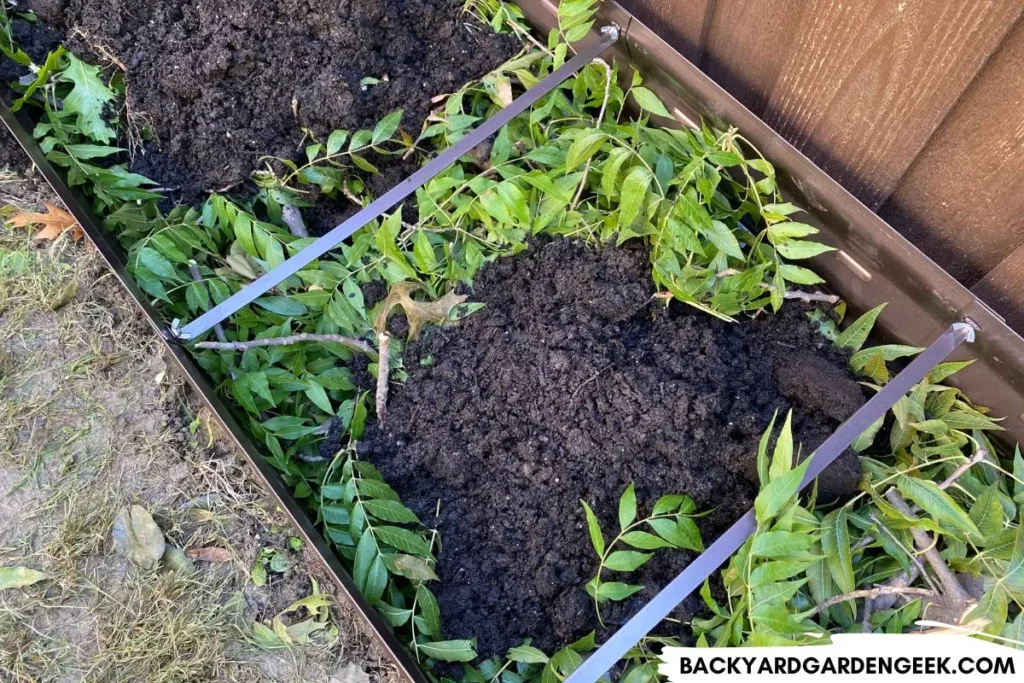
Over the course of 8-12 months, these layers will break down, releasing the nutrients that were bound up in both the materials and the compost. This will create a healthy soil profile as time goes on and is a contributing factor if you’ve ever noticed that your vegetables grow better in raised beds than they do in your native soil.
pH Levels and NPK Ratios: What Are They?
Speaking of healthy soil profiles, I need to say a few words about pH levels and NPK ratios.
In short, pH stands for “potential hydrogen” and refers to the relative acidity or alkalinity of your soil on a scale from 0 to 14.
When you garden, you’ll want to know the pH of your soil because different plants thrive in different pH environments. A pH level of 7 is considered neutral, while levels below 7 are acidic and levels above 7 are alkaline.
Plants do not like either extreme on the pH scale, but some plants do better in slightly acidic soils while others do better in soils that are slightly alkaline.
In terms of your soil’s NPK ratio, that stands for Nitrogen (N), Phosphorus (P), and Potassium (K):
| Nitrogen | Nitrogen plays a key role in photosynthesis and helps with processes involved in cell growth and division. It supports overall plant growth and vigor, especially in the plant’s stems and leaves. |
| Phosphorus | Phosphorus is an essential nutrient for plant growth as it supports root development, flower and fruit production, seed formation, energy transfer within the plant, and stress tolerance. A lack of phosphorus in the soil can result in stunted growth, poor root development, and reduced yields. |
| Potassium | Potassium is important for plant growth as it helps regulate water balance, improve stress tolerance, and enhance the overall strength and hardiness of the plant. It also plays a role in photosynthesis, starch formation, and the development of healthy roots, stems, and leaves. |
If your soil is lacking in N, P, or K, you might see yellowing among your plants’ leaves, stunted overall plant growth, and a reduced harvest.
I recommend getting a soil test done 1 year after you’ve installed new raised garden beds. That way, you’ll have left enough time for the materials in your beds to mostly decompose, and you’ll then get a good sense of whether or not the soil in your beds has any pH problems or nutrient deficiencies.
As I’ve noted throughout this article, compost is an excellent soil amendment that provides many benefits for plant growth, but you should never fill entire raised beds with it unless you don’t plan on planting in them for at least 12-14 months.
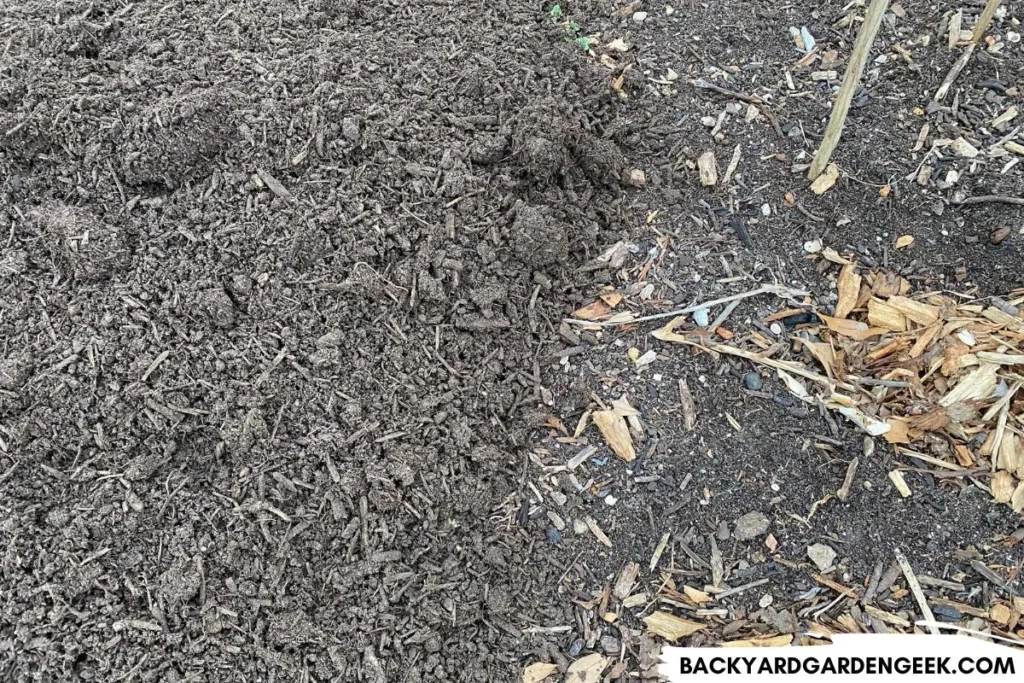
To create a healthy soil environment for your plants, you’ll instead want to amend your soil with compost and possibly other important materials (like organic fertilizers, vermiculite, coconut coir or peat moss, and perlite).
With the right soil environment in your raised beds, your plants will thrive, producing all kinds of amazing fruits and vegetables for you and your family.
Additional Information
If you’re wanting to learn more tips and strategies when it comes to raised bed gardening, I encourage you to check out these articles:

